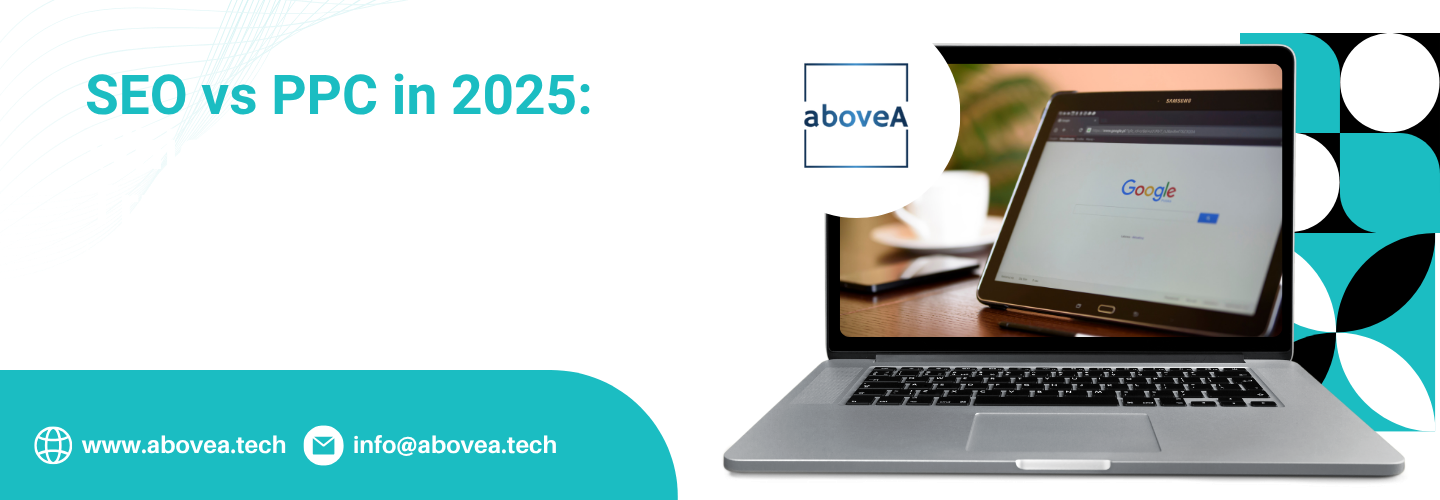

Faustas Norvaisa
A Growth & Product Expert with 9 years of experience in revenue diversification, international expansion, SEO, and digital marketing. Passionate about scaling businesses and building global brands, he empowers companies to thrive with his motto, "sharing is caring.
SEO vs PPC in 2025: Which Channel Builds More Trust (and ROI)?
The question of SEO vs. PPC is a serious concern for businesses in 2025. Both can help businesses find them online, but they do it in different ways.
In a nutshell, SEO stands for when your website shows up in Google without paying for clicks. It takes time, but the results can last a long time. PPC is about you paying money to show up fast, but once the money stops, so do the clicks. So, which one should you choose?
Some people trust websites more when they aren’t ads. Others want fast results and are willing to pay for them. But trust matters now more than ever. Your customers look for real answers, not just ads or big promises.
That’s what we will explore today in this super extensive guide – how SEO and PPC work. By the end, you will see what builds trust, what brings better ROI, and when to use one or both. Eventually, it will help you make wiser and well-informed decisions.
Discover how we turned SEO and PPC into $2M revenue!
Table of Contents
What Is SEO in 2025?
First, let’s talk about how SEO in 2025 is today about more than just keywords than it was some years ago. Search engine optimization taps into how your website earns trust and shows up in Google search results. In other words, it has to do with how people search for answers; they click what looks real, not ads.
In 2025, to rank on Google, your site must have strong SEO trust signals. That means having helpful content, fast loading speed, clear structure, and real experience. Google now uses something called E-E-A-T: Experience, Expertise, Authoritativeness, and Trust. This principle or check system evaluates whether your web content is written by people who know what they’re talking about. That said, with new rules, especially speaking about AI-generated content, quality matters more than ever. You can’t trick search engines anymore.
There are four key parts to SEO: on-page, off-page, technical, and local. Each element has a role to play. On-page SEO basically means how search engines read your content. Off-page builds your website’s reputation through building links with other websites and your cross-marketing partners. Technical SEO makes your site fast and easy to crawl, which usually includes how you structure your website’s page hierarchy and user journey throughout it. Finally, local SEO helps people nearby find your business. If used together, they boost your organic visibility by a mile.
A good long-term SEO investment takes time – usually months if not years, depending on your market saturation and level of competition. But it keeps working without extra cost. That’s why smart businesses follow trends for SEO continuously to stay ahead, winning the competitive edge.
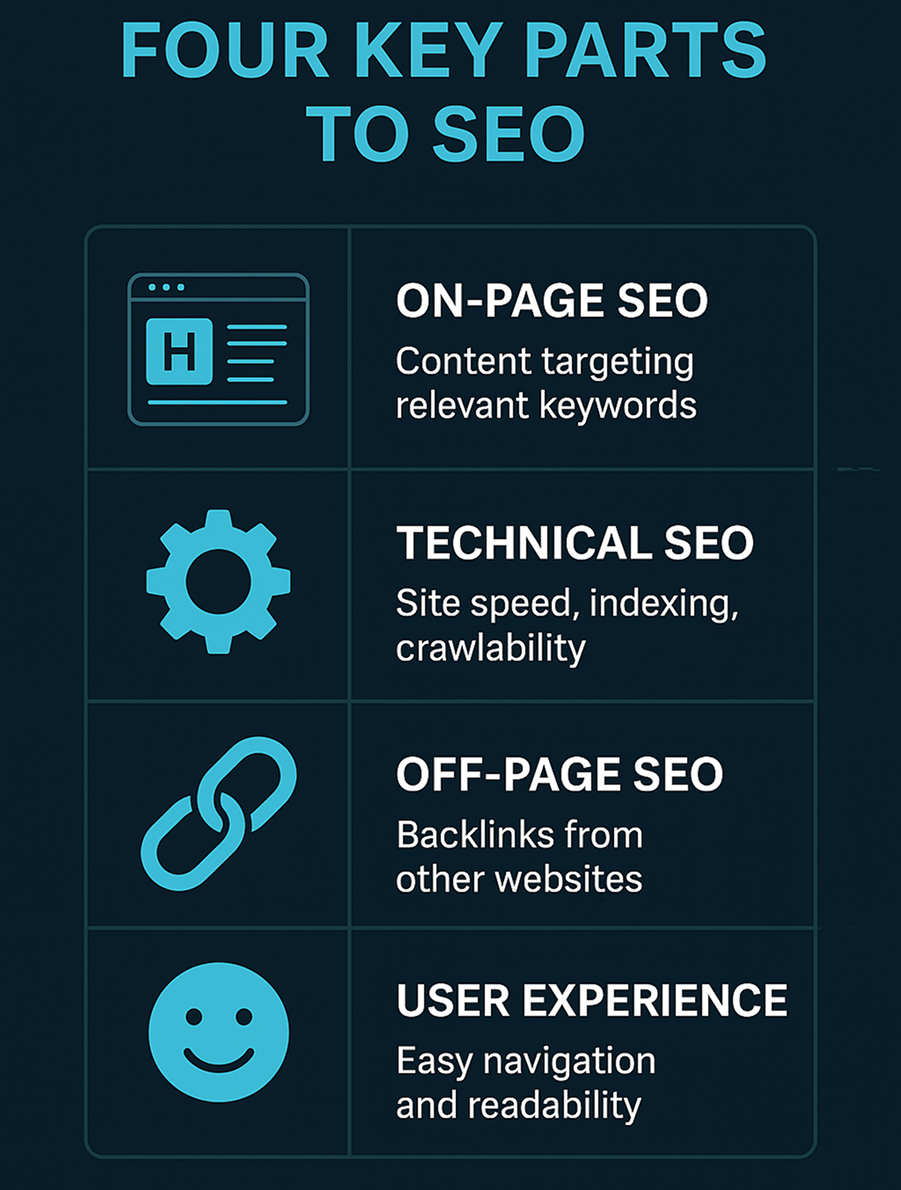
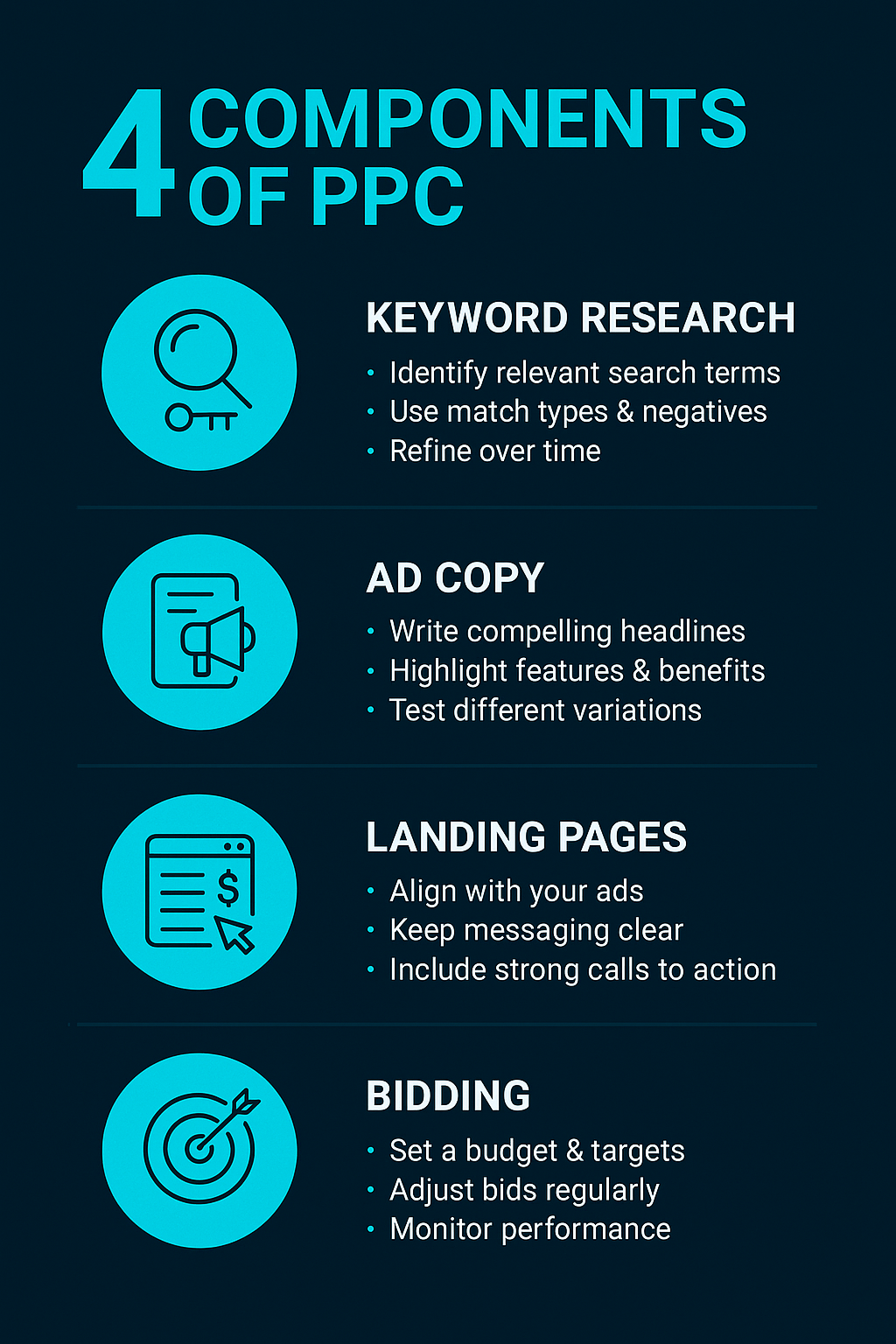
What Is PPC in 2025?
PPC stands for Pay-Per-Click. In 2025, it’s still one of the fastest ways to get visitors to your website. You can use Google or Bing Ads, as well as social media platforms like Meta and LinkedIn.
In the most basic sense, with PPC, you pay per click or impression of your ad. That means this approach offers quick results, but it also gets more expensive year after year. Unfortunately, the fact of rising financial inflation and market saturation in industries, the cost-per-click is rising. Thus, making many businesses think harder about their paid search use in their activities, which usually leads to them opting out. All thanks to big investments and large risks of this advertising option.
But there is a good side to PPC. Unlike what it was before, pay-per-click advertising in 2025 is smarter than it has ever been. Now, it contains functionalities like automation, smart bidding, and responsive ads to help advertisers reach the right people. Yet, it’s not perfect. Privacy rules, especially in the EU, make tracking harder, and sometimes it’s tricky to know where your leads really come from.
Still, many brands use PPC for fast growth. When done right, the PPC can bring a strong return on investment in 2025.
SEO vs PPC: Key Differences at a Glance
To really understand SEO vs PPC, you need to compare the key parts that affect results. I made this table to look at things that matter most for a business like yours: time, cost, trust, control, and how easy it is to grow. They were picked because they are usually key components that are taken into consideration by those responsible for the strategic direction of their companies.
For instance, maybe you wanna results fast. While others might care more about building trust over time. Finally, some need full control, or need something that runs on its own. That’s why I built this SEO vs PPC comparison chart – so you can see the differences clearly.
Feature | SEO (Search Engine Optimization) | PPC (Pay-Per-Click Advertising) |
Time to See Results | 3–6 months (long-term gains) | Instant (but short-term) |
Cost Over Time | Lower if done right | High and ongoing |
Trust Factor | High (users trust organic results) | Lower (clearly marked as ads) |
Click-Through Rate | Higher for top organic results | Can be lower than SEO |
Scalability | High with content and links | High with budget increases |
Control | Low over algorithm changes | High control over targeting/budgets |
What can you learn from this?
If you care about organic vs paid visibility, SEO helps you stay seen over time. It builds trust and lowers costs in the long run. But if you need fast clicks or want full control, PPC can help, though it costs more.
So, which marketing channel scales better? SEO grows with time and content. PPC grows with money. The best choice depends on your goals, budget, and how soon you want results.
How AI Impacts Both SEO and PPC in 2025
In 2025, AI will play a huge role in both SEO and PPC. It brought up a lot of speed on how ads are shown and how content ranks. But it also changes what works best.
For SEO, AI helps analyze data, create outlines, and find keyword trends. According to the Digital Marketing Institute, 65% of companies reported improved SEO results after using AI tools this year. However, Google uses AI to judge if content is helpful or just full of keywords. That means you must focus on quality and usefulness, not just short tricks, which, again, as mentioned above, taps into Google’s trust and authority signals (e-e-a-t).
When it comes to PPC, AI sets smarter bids and writes flexible ads. It helps show ads at the right time and to the right people. But it also means campaigns change faster, so marketers have to watch them closely.
One new trend that you should be keeping a keen eye on is Answer Engine Optimization (AEO). This is optimized content, so AI chatbots (like ChatGPT or Google’s SGE) will pick it as an answer for search engine users. This affects both channels because your content may not get clicks unless it shows up in these AI summaries.
In short, AI can potentially bring big gains, but also new challenges. The best approach now is to combine AI tools with real human insight, so your brand remains useful, trustworthy, and easy to find.
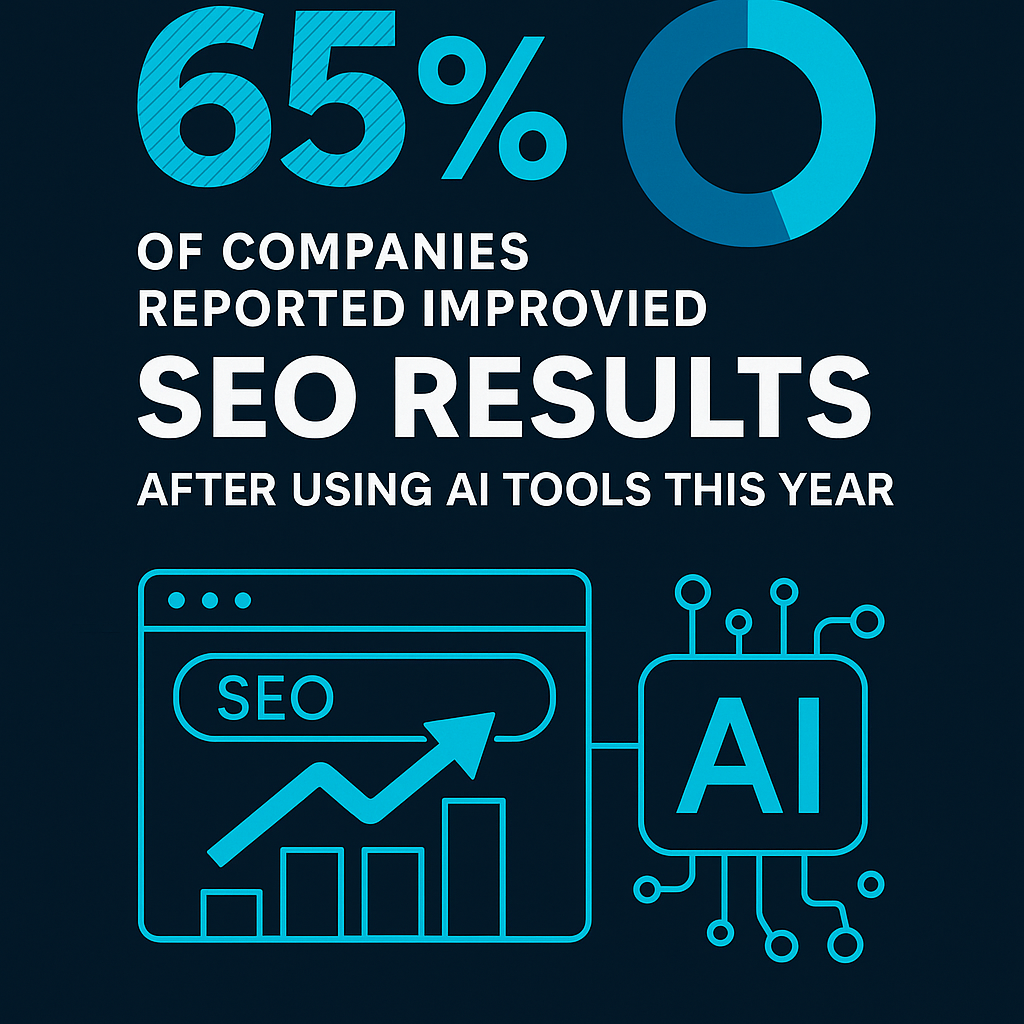
Which Channel Builds More Trust with Users?
In recent years, many agencies and researchers have concentrated on clicks and conversion rate optimization questions. It was revealed that around 97% of users ignore paid search results, turning straight to organic listings instead. On top of that, heatmap studies also indicated that clicks concentrate on the first organic results, not ads. Therefore, emphasizing SEO is more capable of building trust, clicks, and conversions.
Visitors trust websites that look like someone worked hard on them. SEO shows that effort through real experience, helpful reviews, trusted backlinks, and deep content. These are all strong SEO trust signals, and they follow Google’s E‑E‑A‑T rules: Experience, Expertise, Authoritativeness, and Trust.
On the flip side, even well-targeted PPC ads can feel like sales pitches. Just 50% of users can’t tell the difference between paid ads and organic results, and 42% say they trust paid search ads, but 94% still skip them.
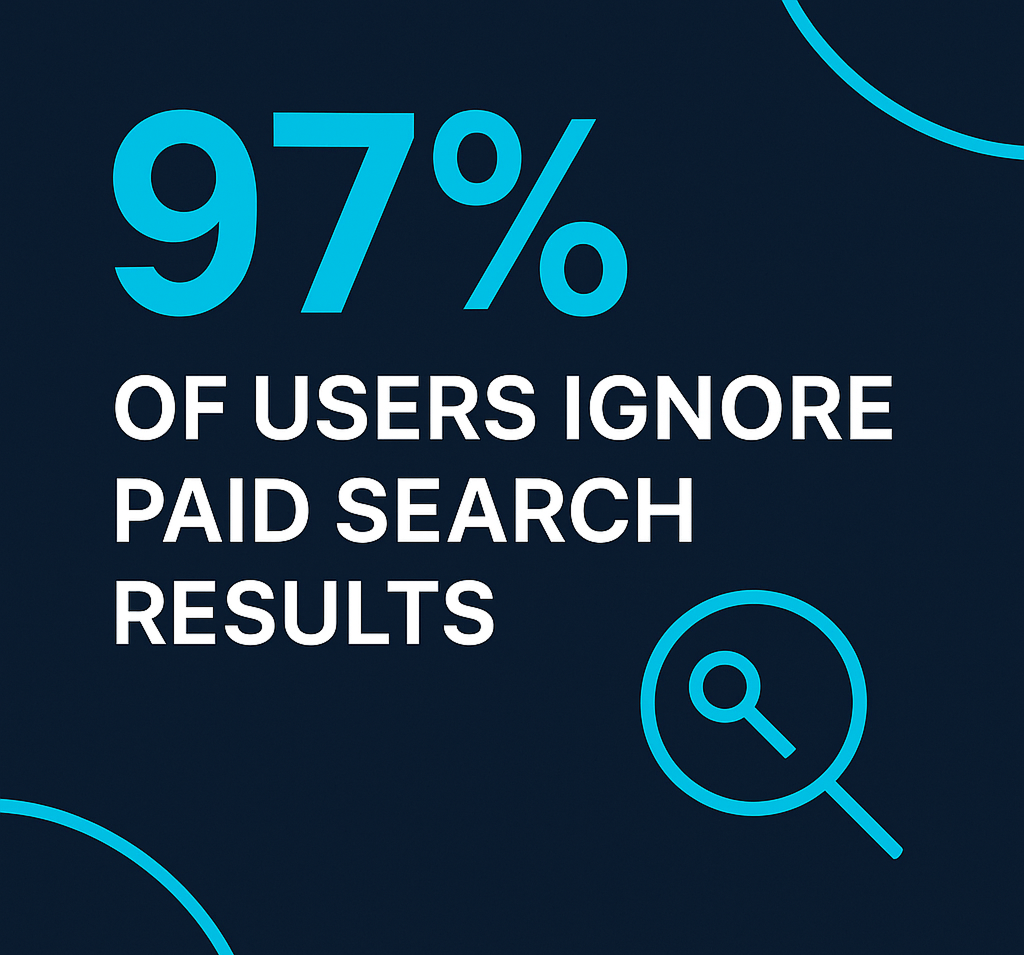
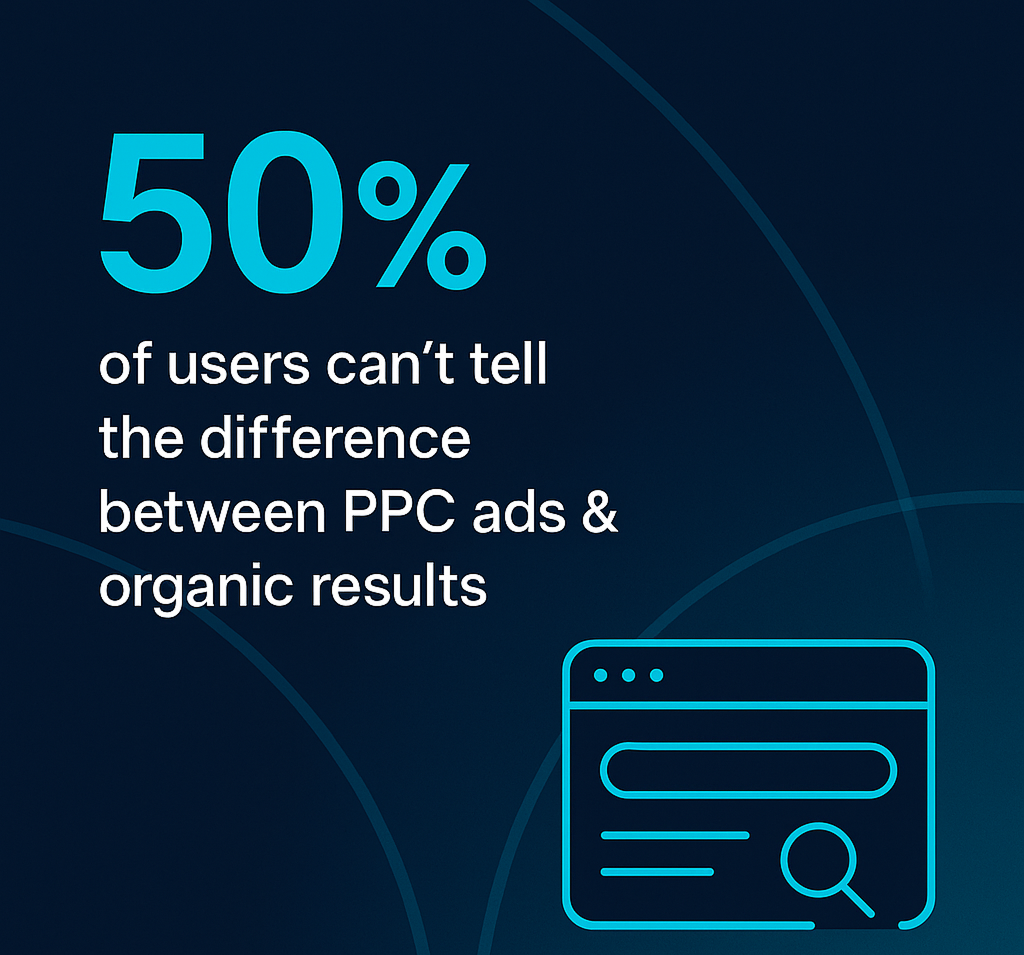
So to speak, in 2025, it can be said that trust matters more than visibility. Are Google Ads trusted by users? To some extent, but not as much as helpful, high-ranking organic pages. I would say that long-form SEO content builds authority in a quieter, more convincing way.
Which One Delivers Higher ROI in 2025?
ROI means return on investment. In simple terms, how much you get back compared to what you spent. In 2025, both SEO and PPC bring results, but in different ways.
PPC offers fast returns, unlike SEO. Many brands use it to get leads quickly. If you set it up well, you might get back $2 for every $1 spent, or a 200% ROI. That’s strong. But there’s a rule. Once you stop spending money on ads, your traffic drops to zero. The results don’t last.
SEO works the opposite way. It starts slow but builds over time. Strong SEO campaigns in 2025 often report 500% to 1,300% ROI after a year or more. That is possible since SEO will keep working even after you stop investing heavily. It generated traffic again and again without extra cost.
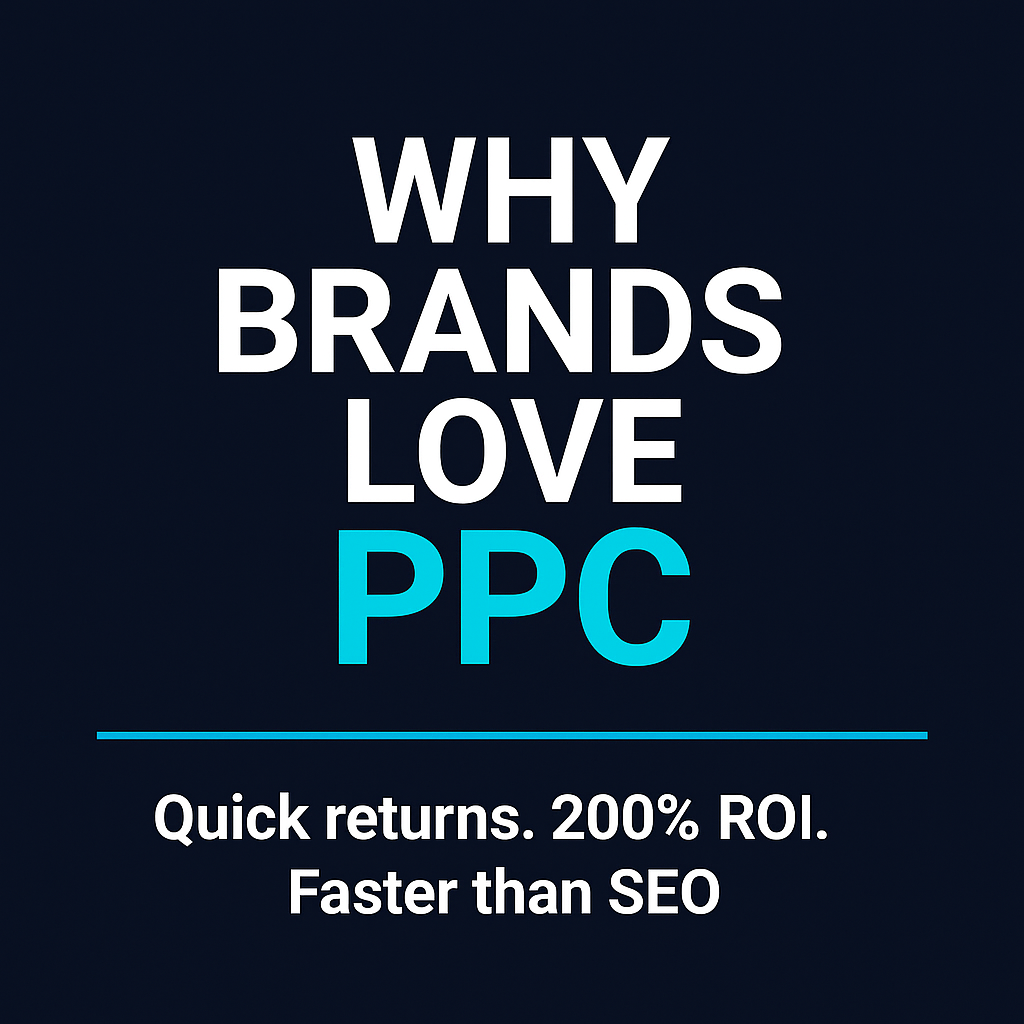
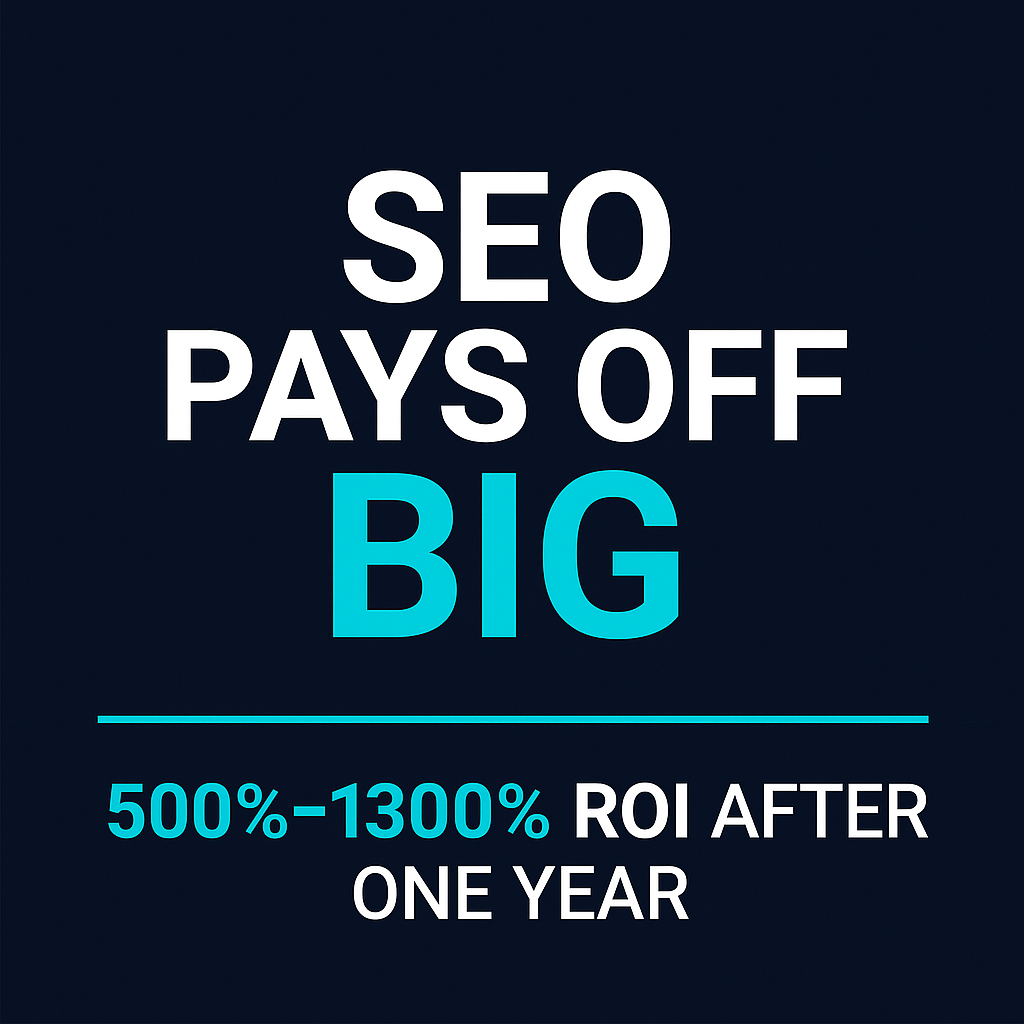
Another factor to consider is the cost per lead (CPL). In paid advertising, the average CPL is now about $70, depending on the industry. SEO leads may cost more at first, but once your pages rank, the cost goes down.
If you care about lifetime value (LTV), that is, how much a customer brings over time, SEO often wins. Organic leads tend to stay longer, buy more, and trust your brand more.
Still, ROI can vary greatly depending on your industry. A software company will see different results than a local plumber. To give you more context, here’s a quick comparison of average SEO and PPC ROI across industries in 2025:
Industry | Avg. SEO ROI (12mo) | Avg. PPC ROI (3mo) |
SaaS | 800%–1,300% | 150%–250% |
Local Services | 500%–900% | 200%–300% |
eCommerce | 700%–1,200% | 100%–180% |
B2B Consulting | 1,000%–1,600% | 80%–150% |
These numbers reflect average outcomes reported in industry case studies and performance marketing audits from 2024–2025. Your exact ROI will depend on your niche, strategy, and execution quality, but this snapshot gives a sense of what’s typical.
That said, when we think about SEO ROI as opposed to PPC ROI isn’t about which is best, but timing. PPC is extremely good when it comes to short-term goals. SEO grows long-term. For smart budget planning in performance marketing, many companies now use both, starting with PPC and building SEO in the background.
Where SEO and PPC Fit in the Buyer Journey
As we go deeper into the discussion of SEO vs PPC, we must discuss the elephant in the room – the buyer journey. Basically, every customer goes through a process before they decide to buy something. First, they notice a problem. Then they look for answers or solutions. Finally, they pick the best one and make a decision. This is called the buyer journey, and both SEO and PPC play different roles at each stage.
SEO usually supports people when they are learning. It helps them find answers and trust your brand. PPC is great when they are closer to buying. It shows them your offer right away and brings quick attention.
Buyer Stage | What the Customer Is Doing | How SEO Helps | How PPC Helps |
Awareness | Searching for info or learning about a problem | Blog posts, how-to guides, educational content | Display ads, video ads, discovery ads for new audiences |
Consideration | Comparing options or researching solutions | Product pages, comparison articles, customer success stories | Search ads with keywords, retargeting ads, benefit-driven copy |
Decision | Choosing a provider or making a purchase | Reviews, FAQs, testimonials, trust-building content | Branded ads, promo offers, urgency-based CTAs, cart remarketing |
Using both SEO and PPC helps you stay in front of customers at every step. SEO builds trust and answers questions. PPC brings fast results and reminds people to come back. When done right, they work together to guide someone from their first search to their final click.
Real-World Examples: When to Choose SEO or PPC
Now, let’s look at real businesses that used SEO, PPC, or both to grow. These case studies from 2021 up to 2025 will show you what worked, why it worked, and what you can learn. Let’s dive in!
Cascadia Senior Living – PPC for Quick Traction
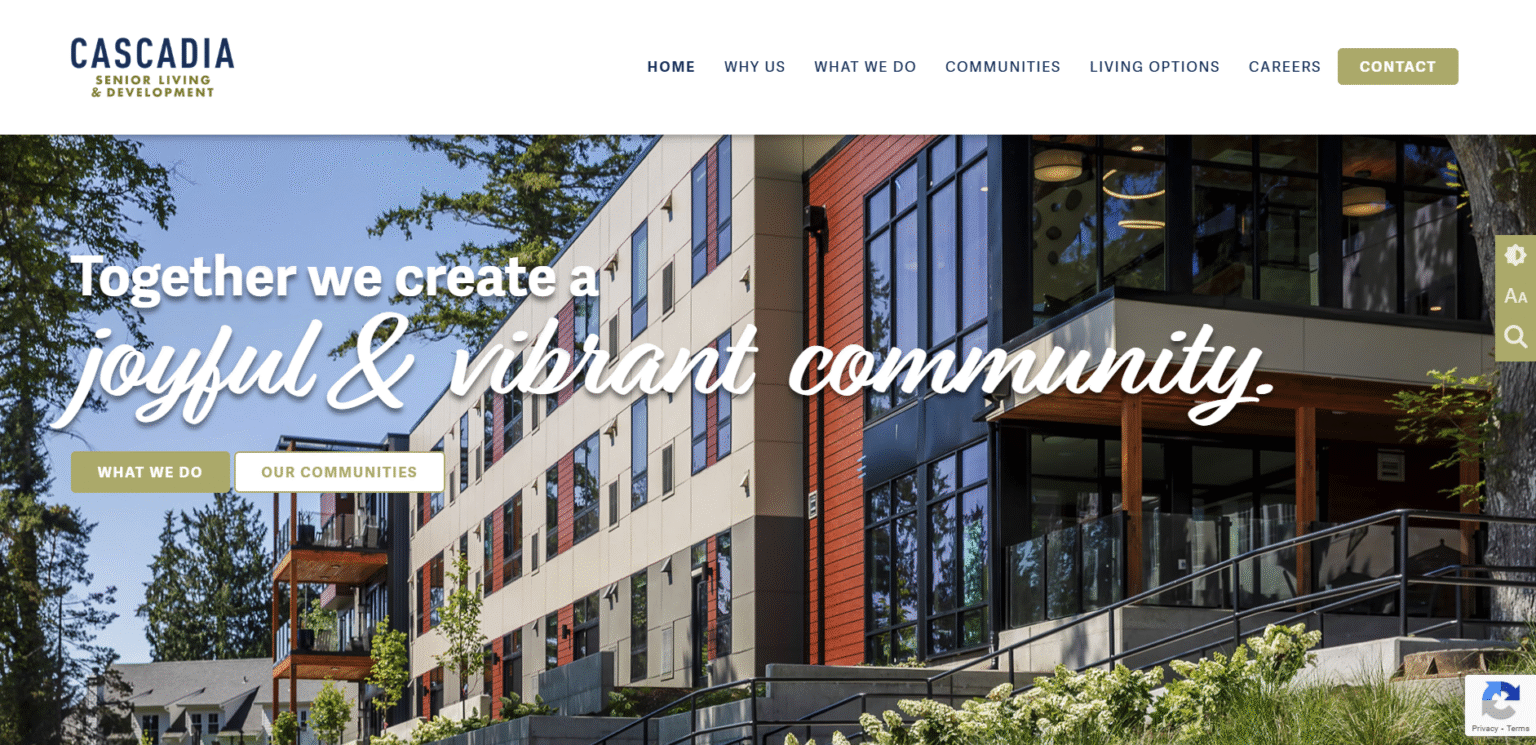
The first case study is from Cascadia Senior Living, based in the Pacific Northwest. They wanted to promote a new community development and reach families seeking senior care options. Cascadia had very limited visibility and a tight timeline, which made them turn to PPC as a viable approach that could grant them fast results.
Their PPC campaign targeted Google users with high intent, meaning people searching for terms like “senior living near me” or “assisted living options in Washington.” The ads were designed to match some user intents, like urgent needs, offering quick paths to book a tour or speak with staff.
In the first month, their Google PPC campaign delivered a 20% increase in qualified leads. Within a few more weeks, client inquiries jumped 50% compared to previous performance. The campaign was done by pairing advertising with local landing pages and reputation-building blog content, while PPC drove the traffic down the sales-marketing funnel. This approach helped Cascadia Senior Living fill available units faster than expected, giving them breathing room to plan organic strategies later.
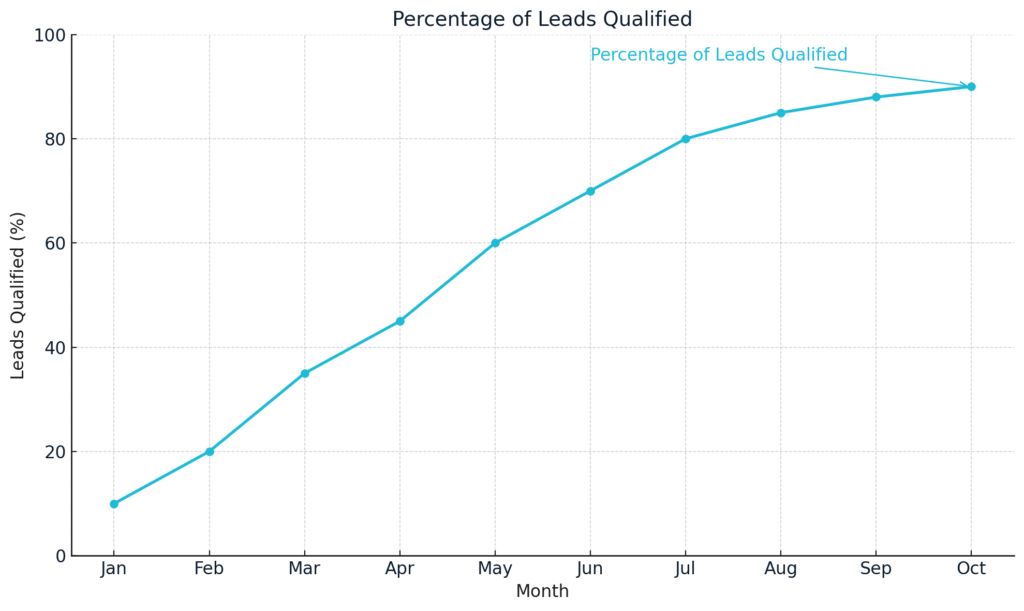
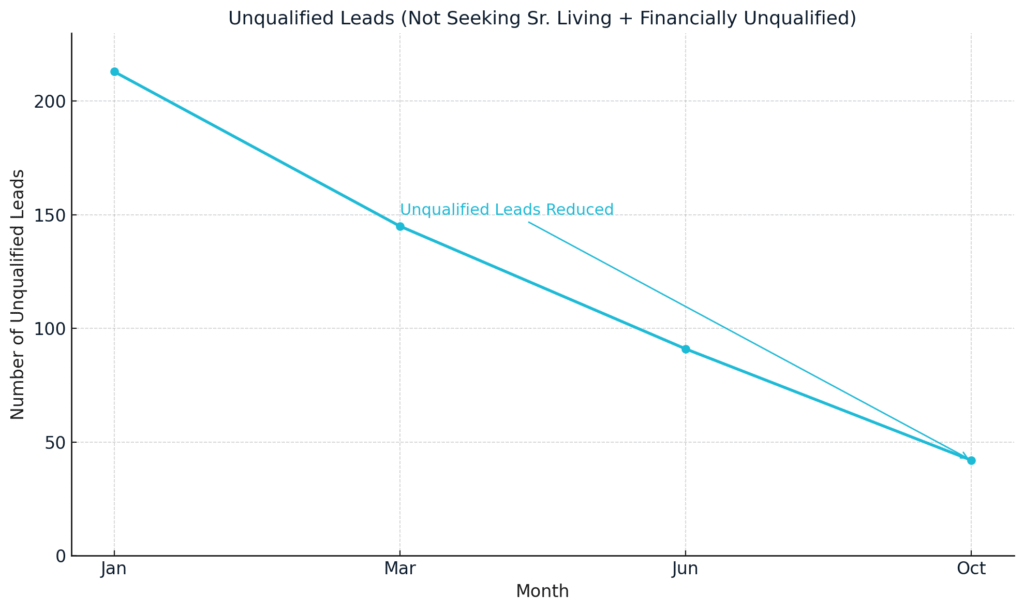
So, what we can learn from this case study is that when launching a product or service, speed is key. Cascadia didn’t have time to wait months for SEO to take hold. PPC delivered immediate visibility. It helped them reach the right audience. Also, the PPC campaign proved critical during the early stage of their rollout. So, we can conclude here that PPC can be useful for fast growth. Ideal for new offerings or time-sensitive campaigns. Especially when paired with follow-up strategies like SEO to build trust over time.
South Florida MSP – PPC to Build a Business Pipeline Fast
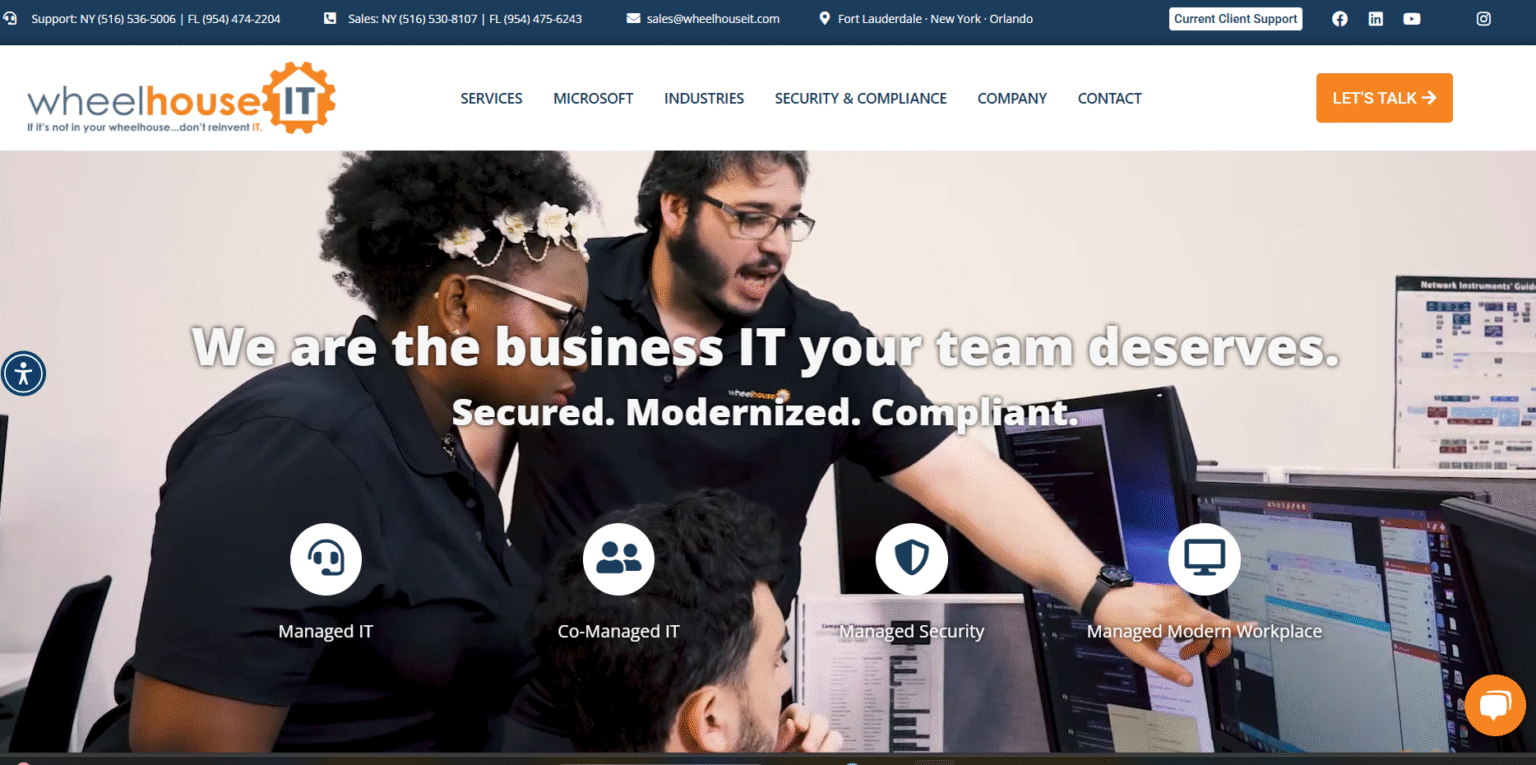
The second case study I want you to explore comes from a managed IT services provider (MSP) in South Florida. An interesting case about the business that was starting nearly everything from scratch. This newly issued company needed traction fast. However, the challenge here was that their existing SEO had no traction, and organic visibility was close to zero. Waiting 6–12 months for SEO growth wasn’t an option if they wanted to onboard first clients to start generating revenue.
So, what they did was to turn to Google Ads to generate qualified leads immediately. Their PPC campaign was tightly focused on local service keywords like “IT support Miami” and “managed IT provider Florida.” Their PPC team built custom landing pages to match the ad intent and ensured a strong call-to-action flow.
The results were fast and impressive:
- Within weeks, the campaign brought in 10–25 qualified leads per month.
- This led to $60,000 in monthly recurring revenue (MRR) from new clients.
- With long-term contracts in place, projected revenue from this campaign exceeded $2 million over three years.
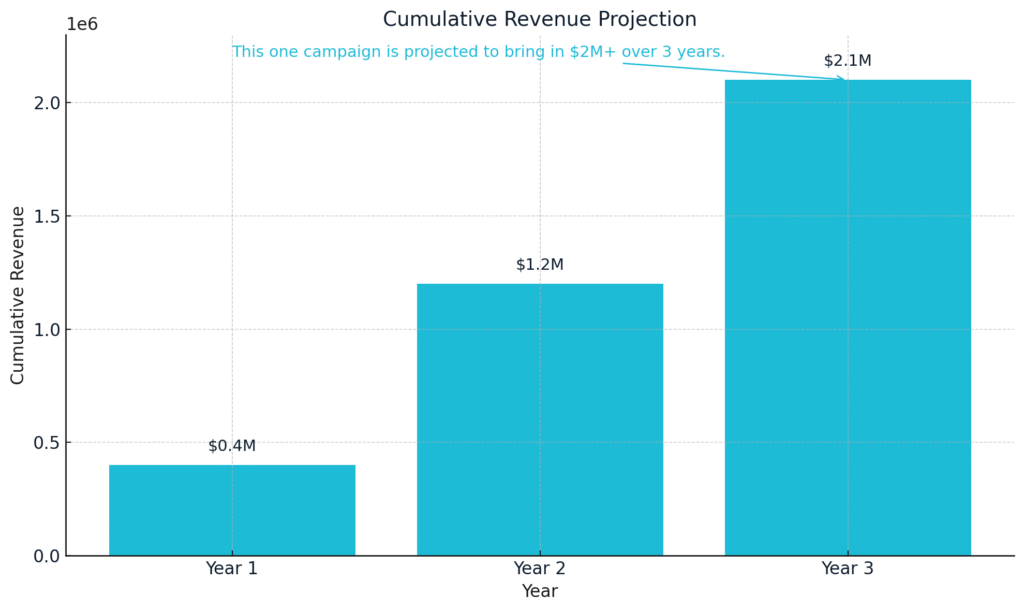
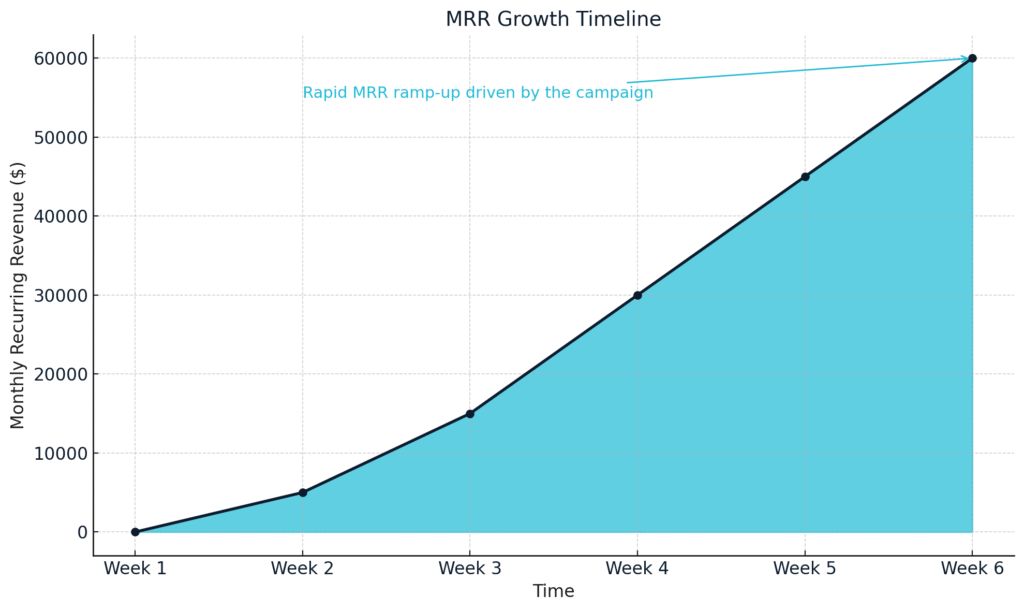
The campaign was continuously optimized using smart bidding, negative keyword tuning, and geotargeting. Ad copy was refined using A/B testing to lift click-through and conversion rates.
In this case, as you can see, PPC didn’t just bring traffic, it brought leads that converted into paying clients. While SEO was still in progress, PPC proved to be the main driver of business growth during the first year. What I want you to take from this overview is that PPC can be a high-ROI option for service providers, especially when they need fast traction or don’t yet have strong organic visibility.
Worthington Direct - Using SEO + PPC to Scale International eCommerce
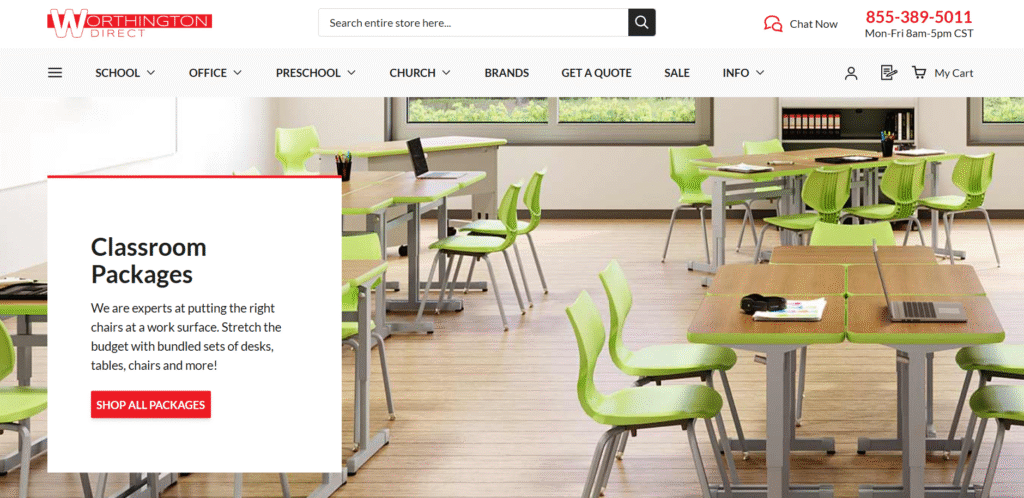
This third case study is rather unique because now we will look at what long-established companies do when they already have an SEO presence. That’s why we will be looking at Worthington Direct. They have been in business for decades, but in 2021, they aimed to expand beyond the U.S. and reach new global audiences. Their site already had basic SEO in place, but growth had plateaued. They wanted both faster results and long-term traffic increases, so their PPC division developed a hybrid strategy using both PPC and SEO.
The way they did it was quite interesting. First, they optimized site structure, product categories, and internal linking to boost organic performance. Simultaneously, Google Shopping and paid search campaigns were launched in key target regions. These PPC campaigns helped test new markets quickly and bring in targeted, transactional traffic while SEO efforts matured. Eventually, the combined outcome was exceptional:
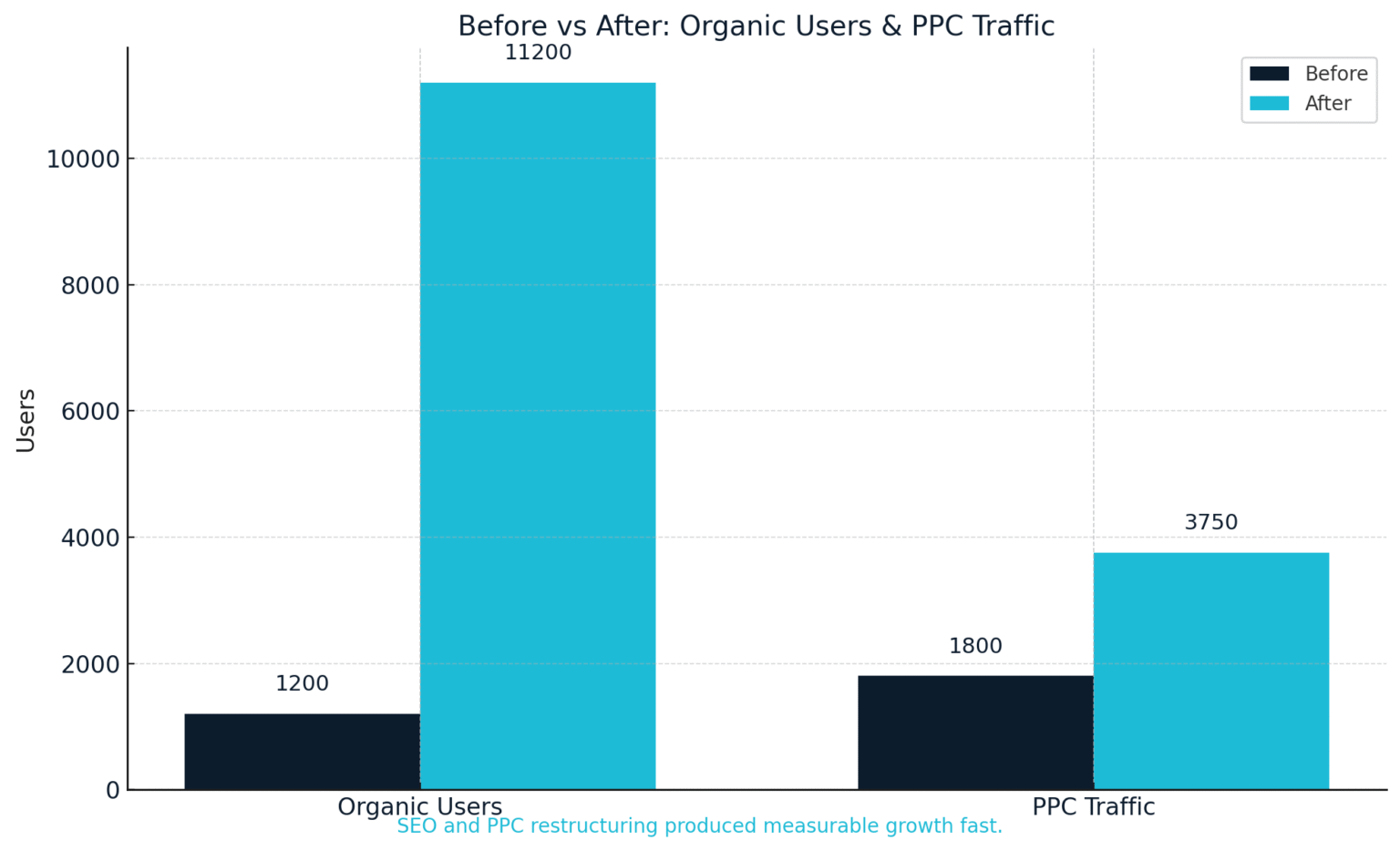
- 969% increase in organic users, driven by SEO restructuring and content upgrades.
- 109% increase in PPC traffic, as campaigns were fine-tuned for each region.
- Massive sales growth across product lines, particularly in areas where both strategies overlapped.
- Long-term ROI increased due to rising SEO-driven sales, even after paid budgets remained flat.
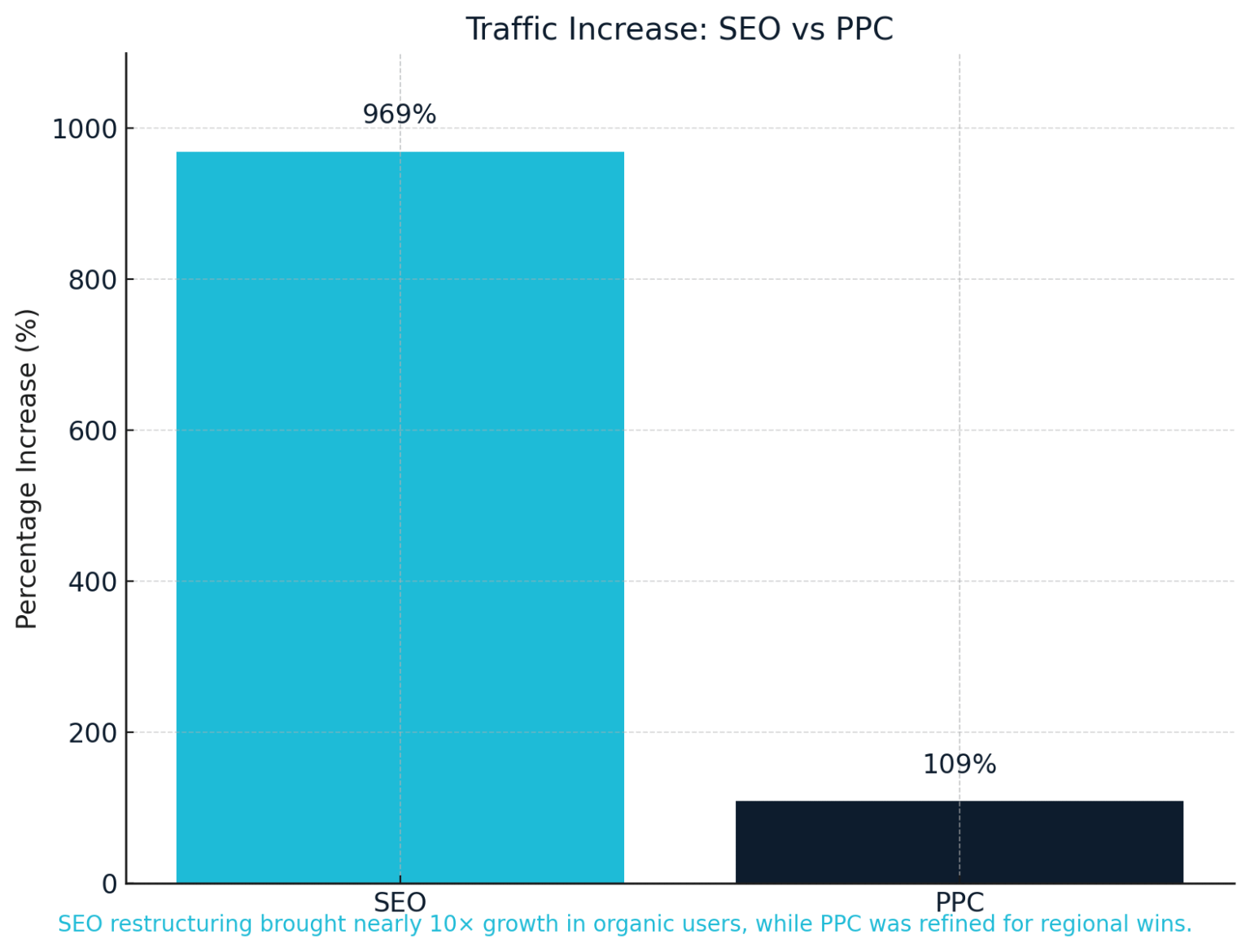
There are several reasons why this hybrid strategy worked. Although SEO takes time, once strong, it delivers scalable growth. Moreover, the use of PPC gave Worthington Direct the immediate reach it needed while allowing SEO to grow quietly in the background. The paid campaigns filled in the gaps while search visibility caught up.
What we can conclude here is that e-commerce brands looking to scale internationally, using both SEO and PPC together, can achieve stronger results. Using either alone, especially when expanding into new, competitive regions, will not help you win the competitive advantage you might be looking for.
These three real-world stories are depicting how the right channel depends on your goal and stage of growth. Cascadia Senior Living used PPC to gain quick traction during a time-sensitive launch. The South Florida MSP proved that PPC can build a business pipeline fast, even when SEO hasn’t started yet. And Worthington Direct showed that a hybrid strategy combining SEO and PPC works best when scaling into new regions and reaching global markets.
Each approach has its place. When used wisely, SEO and PPC can support each other, giving you both trust and reach. Next, we’ll look at how to combine them for even better results.
Can SEO and PPC Work Together?
Yes – they work even better when combined. Many companies in 2025 are no longer asking “SEO or PPC?” Instead, they’re asking, “How can we use both?”
As you probably have seen in the case studies before, PPC helps you show up right away. It brings fast results both in clicks and clients. On the other hand, SEO is an approach that builds over time and keeps working long after you stop spending money. If you use both of them together, you can reach people at every stage of their journey.
Plus, SEO content is very helpful to retarget people who clicked your ads but didn’t buy. Those visitors can see your blog or helpful guides later. This method gonna make your brand look more trustworthy. It’s a strategy called full-funnel marketing. In 2025, it’s a big deal.
There is another trick. You can run PPC ads for the same pages you’re trying to rank with SEO. That way, your brand shows up twice on the page – once as an ad, and once in the organic results. It makes your business look stronger.
That said, this kind of SEO–PPC synergy is what top marketers use to lower costs, grow faster, and stay visible across the web.
Hidden Costs and Risks of Each Strategy
Indeed, SEO and PPC can bring big wins. Yet, if you’re not careful, they can also bring big losses. Many people only look at the good side, but let me walk you through what to watch out for.
Let’s start with SEO; this method’s biggest risk is time. It takes months to work, and there are no quick results. If you pick the wrong keywords or don’t follow the rules, you might waste effort. On top of that, Google updates its algorithm very often. Thus, your rankings can change overnight. That’s one of the biggest SEO risks in 2025. Also, creating good content, building links, and fixing technical problems takes work, and that can get costly if you hire the wrong people.
With PPC, the danger lies in your wallet. These paid ads cost money every single day. If you don’t know what you’re doing, your budget can disappear fast. In many instances, some businesses pay too much per click or target the wrong audience. Other users often forget to track results or use bad landing pages that don’t convert.
Finally, PPC doesn’t last. Once you stop paying, traffic stops too. SEO lasts longer, but it can take a while to start showing value because the evergreen lead funnel is intricate and asks for many dedicated hours.
What I want you to avoid in search marketing: poor strategy, no tracking, or thinking that one channel will fix everything. Smart businesses know the risks and plan for them. They test early. They track often and build slowly when needed. That’s how you will stay safe and get better results.
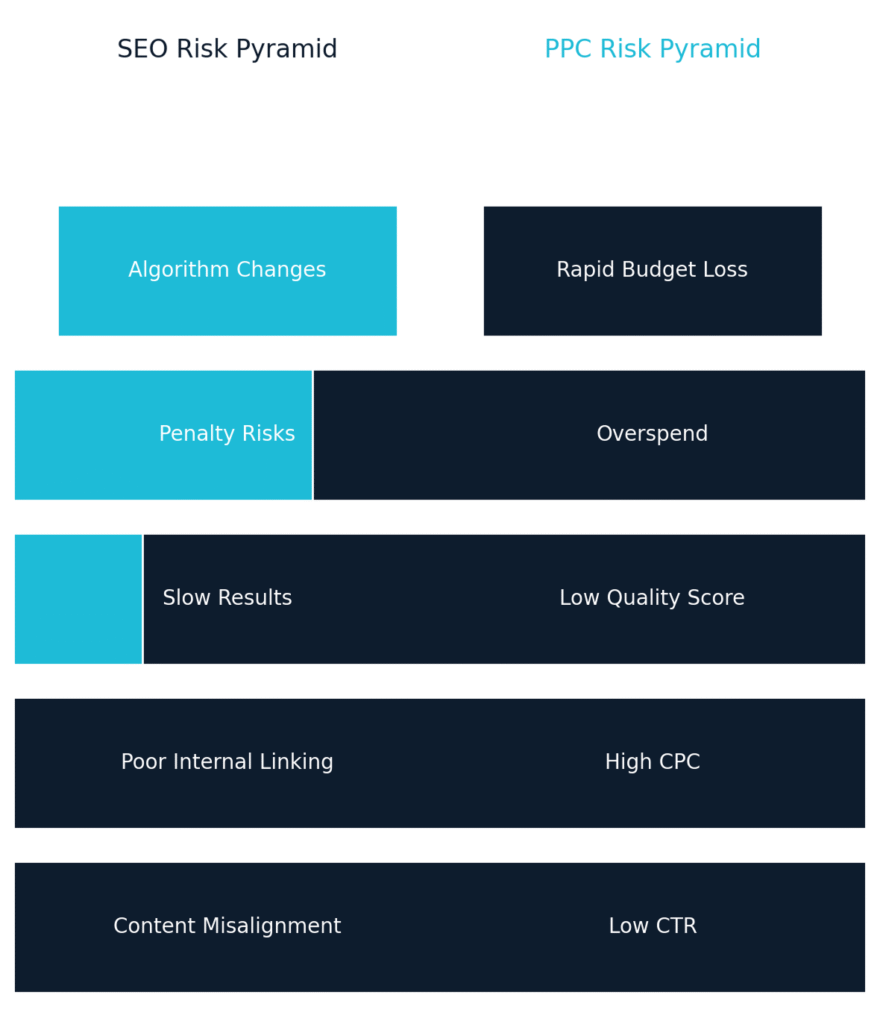
How to Decide What’s Right for Your Business
Should you invest in SEO or PPC? The right channel depends on your goals, timeline, and budget. PPC is great for fast results. If you’re launching something new or need leads right away, paid ads get you traffic almost instantly. You can also test different messages quickly and change things on the fly. That’s why many startups or product launches begin with PPC.
On the other hand, SEO is better for the long run. It helps build trust, lowers the cost per lead over time, and keeps bringing traffic even when you stop working on it. SEO is especially helpful for B2B companies, where trust matters more than speed.
Here’s a simple table to help you decide:
Business Goal | Better Channel |
Launching a product fast | PPC |
Building trust and authority | SEO |
Need leads tomorrow | PPC |
Want lower costs over time | SEO |
Competing in local search | SEO (local focus) |
Selling low-cost items fast | PPC |
High-ticket service (e.g., B2B) | SEO |
Testing new messages or markets | PPC |
Many smart businesses use both. They use PPC for lead generation early on, while their SEO content grows in the background. This way, they get short-term wins and long-term value. Generally speaking, whatever you choose, have a plan. Always track results and adjust often. Whether you’re working with a small budget or scaling a full campaign, picking the right marketing channel will determine your business growth in 2025.
Start converting more traffic into leads without increasing ad spend.
Conclusion: The Future Is Not Either/Or
In 2025, smart marketing isn’t about choosing between SEO and PPC. It’s about knowing when to use each and how to make them work together.
If to take both methods separately, then PPC will give you speed. But it costs money every day. Once you turn it off, the traffic disappears. SEO will provide you with consistent online growth. It takes longer to build, but it can help your brand show up again and again.
The best 2025 marketing strategy uses both. Employ PPC when you need results now. Use SEO to create steady growth that lasts. If used together, both will deliver you a better shot at winning new customers, fast and for the long haul.
If you want balanced digital growth, you don’t have to choose just one. You just have to choose the right one for the moment – and be ready to combine both when it makes sense. Your brand’s future depends on how you earn trust and manage your return. Now that you understand the strengths and risks of both channels, you’re ready to make a smarter plan.
Frequently Asked Questions
1. Is SEO cheaper than PPC in the long run?
Yes. SEO usually costs less over time. Once your pages rank, they can bring traffic for months – or even years – without paying for every click. PPC needs money every day to keep going. That’s why SEO is a smart long-term plan for saving money.
2. Can I just use PPC and skip SEO?
You can, but it’s risky. PPC works fast, but the moment you stop paying, your traffic stops. SEO takes longer, but keeps working on its own. For steady growth, it’s better to use both – PPC for now, and SEO for later.
3. How do I know if SEO or PPC is working?
Track results. For SEO, look at how many people visit your site from search, how long they stay, and if they become customers. For PPC, check your ad clicks, cost per lead, and sales. Good marketing always uses data to make better choices.
4. What’s better for lead generation - SEO or PPC?
Both work, but in different ways. PPC brings leads quickly. SEO brings leads more slowly, but with stronger trust. If you want fast results, start with PPC. If you want lasting value, invest in SEO. The best lead generation strategy often combines both.

